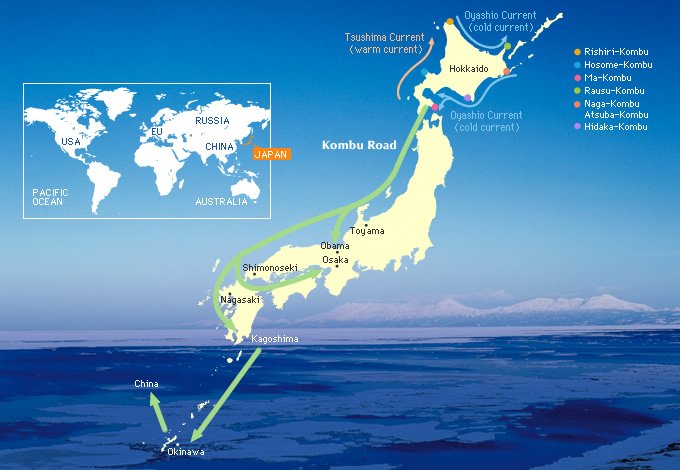Kombu can be found in Japan, Russia, China, Tasmanian Islands, Australia, South Africa, the Scandinavian Peninsula, and Canada.
Most of Japan's kombu is harvested in Hokkaido, accounting for around 90% of all production. The sea ice that drifts over to Hokkaido from Siberia is rich in minerals and provides an environment that produces delicious kombu. The equipment in Japan used to sun dried kombu seaweed is sanitary, and the kombu is well-managed, thus making Japanese kombu especially popular around the world.







